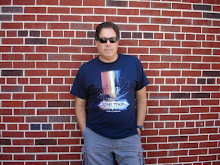Saturday, January 18, 2014
MIGHTY JOE YOUNG (1949)
(July 1949, U.S.)
One of the first things that strikes me as personally interesting or ironic is that MIGHTY JOE YOUNG was released during the Summer of 1949. From my own personal memories of growing up as a kid, this film was usually only shown on television once a year during a Thanksgiving Day film festival (see my post for the original 1933 version of KING KONG for more details on that), so to try and associate this film as a so-called summer blockbuster is unusual, indeed.
Much of the same creative team that had given us the legendary KING KONG sixteen years prior were also responsible for this giant ape film, as well, including actor Robert Armstrong in a starring role and its release by RKO Radio Pictures. To even bother to make such a film as this must have been considered a risk, if not totally redundant gamble. After all, KING KONG was already deeply solidified in the annals of history and a cheap attempt at making the film SON OF KONG had proven a failure. Yet somehow, with just a few changes and a few finesses, the new hero ape of this film is not only embracing, but also as much fun to watch as Kong himself. Joe is smaller, more playful, and more personally mischievous, but rest assured, also just as destructive as his simian predecessor. The expedition this time is to the jungles of Africa where nightclub mogul Max O'Hara (played by Armstrong), along with his cowboy sidekick Gregg (played by Ben Johnson) are in search of a spectacular animal to headline a new act for a new club to be opened in Hollywood. They stumble upon mighty Joe through his young keeper and friend Jill (played by Terry Moore). Jill has raised Joe since he was just a baby gorilla and is the only one who can keep him under tamed control. Much like KING KONG, the story is easily predictable. Man meets ape, man takes ape to a modern civilization (where he doesn't belong!), ape gets really pissed off by man in a modern civilization, ape breaks loose and wreaks havoc on modern civilization, ape must ultimately survive modern civilization. During a course of this film, we get a rather good look at just how cheap and humiliating show business life can be to not only an animal, but to Jill, as well. We watch Joe cooperate and participate in a series of silly stage acts that ultimately treat him like...well, just a dumb gorilla. When he's humiliated by a bunch of drunken morons, he breaks free of his cage and proceeds to systematically destroy the entire club, which I must confess, is still a lot of fun to watch. Following his captivity and his escape, the film is hell-bent on seeing whether or not Joe will escape those who wish to see him shot. Much like Steven Spielberg would do thirty-three years later in E.T. (1982), it's a race against time to see if Joe will get out of his troubles alive and in one piece. The final climactic sequence of the great fire at the isolated orphanage seeks to prove that Joe will not only prevail, but will touch our hearts as a great hero and rescuer of children in this film, as well. This sequence, I might add, really kind of freaked me out as a kid because I'd never seen such a massive and frightening inferno on film before. I found it even more tense than watching THE TOWERING INFERNO (1974)!. Years later, it's still a bit unsettling to see such a raging blaze in a place that houses many children. What I also find a bit unsettling is the idea that the studio that owns the rights to the film these days decided to add a red tint to the entire fire sequence like this...
Seriously, I fail to see the relevance and validity of such a change in film stock as much as I can understand the same act when done to classic silent films. What do these color tints really achieve?? Sure I know the color of fire, but adding a red tint to the scene doesn't necessarily force me to understand or appreciate the moment any further! In other words, please leave well enough alone!
This original black and white version of MIGHTY JOE YOUNG continues to remain a beloved stop-motion classic favorite of mine that I still insist on watching loyally every Thanksgiving weekend, just like when I was a kid. These are the viewing memories that continue to keep me young...well, younger!
Favorite line or dialogue:
Nightclub patron: "Gee, this looks just like Africa."
Her escort: "How would you know? You've never been out of the state!"
Subscribe to:
Post Comments (Atom)




I forget exactly how it all happened, I think she must have been dating one of my Dad's friends, but I actually had dinner at our house once with Terry Moore. I was twelve and when my Mom told me we were having an X movie star to dinner, I misunderstood and thought she meant X rated. Miss Moore cracked up at the mistake and was very nice. I'd never seen her before but after that I did catch up with this film and enjoyed it immensely. The remake (which I know you would hate) was one of the first movies to extensively use a CGI character. At the time it seemed marvelous, now it looks quaint.
ReplyDeleteI wouldn't say I hated the 1998 remake. It had some interested updated story elements. In the end, though, it wasn't worth owning in my film collection.
ReplyDelete